Hiring the right person to handle your product’s user experience can be overwhelming. But if you’re about to hire a UI/UX designer, you’ll want to ask smart questions, not just browse pretty portfolios.
But with thousands of portfolios out there, and freelancers offering everything from “quick designs” to full-blown UX audits, how do you know who’s actually a good fit?
That’s where the right questions come in.
Whether you’re hiring a freelance UI/UX designer or partnering with an agency, asking these 10 questions will help you avoid bad fits and find a designer who truly gets your users and your goals.
1. What’s your design process like?
This is the best question to start with — and a major filter.
Every serious designer should have a clear, structured process. It doesn’t need to be fancy, but they should be able to walk you through what happens from start to finish.
Listen for steps like:
- Discovery or strategy phase
- Wireframing and prototyping
- Visual design
- Usability testing or feedback loops
- Developer handoff
If someone can’t explain how they work or says, “I just go with the flow” — that’s a red flag.
2. Have you designed for similar products or industries before?
It’s not always a deal-breaker if they haven’t, but experience in your space is a huge plus.
If you’re building a SaaS dashboard, hiring a designer who’s only done marketing websites might not be the best match. On the other hand, someone who has worked on mobile apps or complex B2B tools will likely understand flows, multi-step actions, and user roles better.
Ask for examples. Bonus points if they can walk you through the reasoning behind their designs.
3. How do you handle user research and feedback?
User research is the foundation of good UX. Great designers don’t just guess what looks good — they learn how real users behave.
Ask:
- Do they run user interviews?
- Do they look at analytics or behavior data (like Hotjar or GA)?
- How do they incorporate feedback into design decisions?
This tells you how much they really care about the “UX” side of UI/UX.
4. Can you show me a project you’re proud of — and explain why?
This isn’t about the prettiest design. It’s about what the designer learned, how they solved problems, and how they think.
A strong answer might sound like:
“This project didn’t look amazing at first, but we completely restructured the onboarding, and the client’s conversion rate jumped by 40%.”
You want someone who’s results-focused, not just visual.
5. How do you work with developers?
A lot of freelance UI/UX designers stop at the prototype stage. That’s fine, but only if you’ve got a dev team that can easily interpret their designs.
Ask if they:
- Provide specs or design systems
- Annotate interactions (like hover states, mobile behavior)
- Collaborate on implementation (even if only async)
You want a handoff process that’s smooth, not a guessing game.
6. Do you design for accessibility?
Accessibility isn’t optional anymore. Your product should be usable for people with vision impairments, motor challenges, or other needs, and a good designer knows that.
Ask about:
- Color contrast
- Font choices and readability
- Keyboard navigation and screen reader support
Even a freelance UI/UX designer should show awareness of these standards or be willing to learn and adapt.
7. What tools do you use?
This sounds like a small thing, but it matters more than you’d expect. Before you hire a UI/UX designer, make sure they use tools your team can actually work with — like Figma, Sketch, or Framer.
If your dev team works in Figma, and the designer only uses Adobe XD, it might slow things down. If you’re using Notion or Slack, and they don’t, communication might break down.
Most designers today use tools like:
- Figma (industry standard for UI design)
- Sketch, XD, or Framer
- Zeplin, Avocode, or Storybook for dev handoff
The goal here is to make sure they’re compatible with your workflow or flexible enough to adapt.
8. How do you approach mobile vs. desktop design?
Good UX design is responsive by default, not an afterthought.
Ask them how they plan layouts differently for smaller screens. Do they prioritize different actions on mobile? How do they test responsiveness?
You want someone who doesn’t just “scale it down” — but thinks through the mobile user experience intentionally.
9. What happens if we need revisions?
This is especially important when working with freelance UI/UX designers. Clarity up front avoids conflict later.
Ask:
- How many revisions are included?
- How do you handle feedback?
- Is there a deadline for changes?
A great designer will build revision rounds into their timeline — and won’t get defensive when asked for adjustments.
10. What does success look like for you on this project?
This is a powerful question — and one that gives you insight into their mindset.
Do they care about business goals? Metrics? The end-user experience?
If their answer is “as long as the design looks nice,” you might want to keep looking.
You want a designer who says something like:
“Success means the design is not just beautiful — it works. It should make the user’s life easier and help you hit your KPIs.”
That’s the kind of UI/UX designer worth hiring.
Bonus Tip: Pay Attention to How They Ask You Questions
This isn’t a one-way interview. The best designers will ask you smart, thoughtful questions too — about your audience, product goals, growth challenges, and success metrics.
Why? Because good design starts with context.
If a designer jumps straight into colors and wireframes without asking anything about your users or business, they’re likely focused on output, not outcomes.
And that’s not what you want.
Final Thoughts
Finding the right person to handle your product’s design isn’t easy. There are a lot of designers out there, and plenty of them know how to make something “look” good.
But only a few will know how to make something feel good to use. Easy. Clear. Trustworthy. Useful.
That’s the difference between hiring someone to decorate a screen… and hiring a UI/UX designer who actually helps your business grow.
So before you start handing over your Figma file or product vision, slow down. Ask these questions. Listen closely to the answers.
Because design isn’t just about creativity. It’s about clarity, alignment, and results.
Looking to Hire a UI/UX Designer Who Gets It?
At Bilzimo, we don’t just design beautiful interfaces — we design experiences that convert, retain, and grow.
If you’re planning to hire a UI/UX designer or a product-focused team that understands SaaS, B2B, and startup workflows, we’d love to chat.

